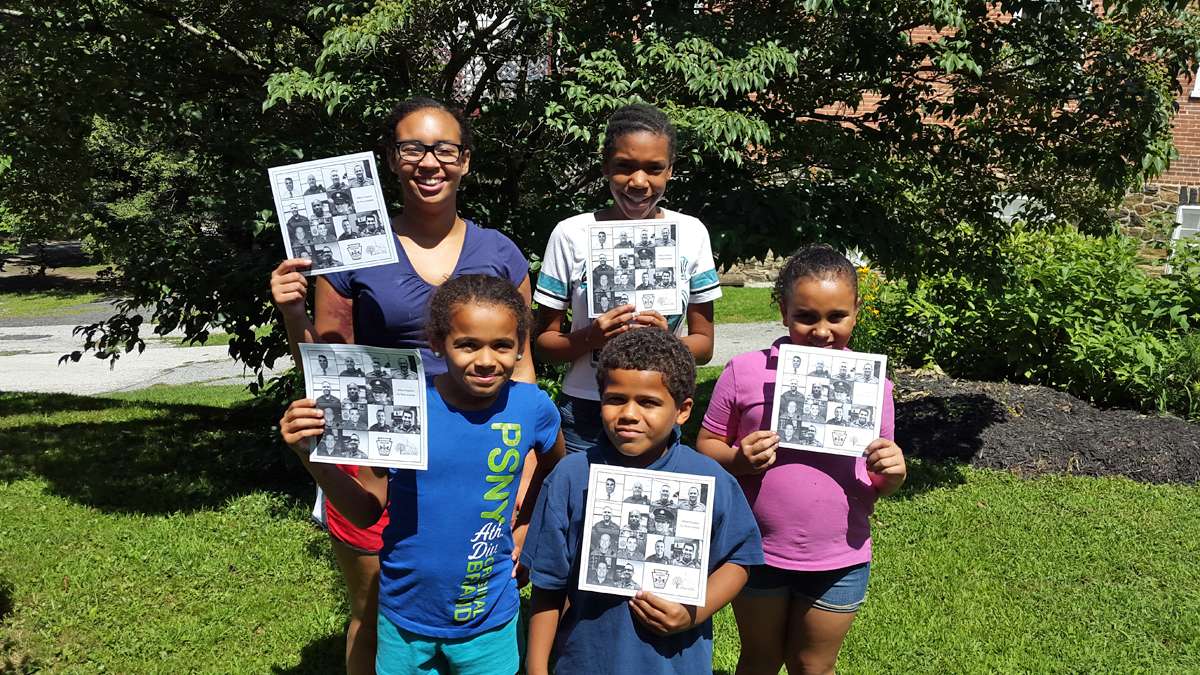Community, police help historic Kennett Square neighborhood rebound from years of crime
ListenTeresa Bass sits on the steps outside the Bethel AME church on East Linden Street in Kennett Square Borough, Pennsylvania, surveying the small street where she’s spent most of her life.
“My mom, she still lives in the same house at 323 East Linden,” Bass says. As an adult, Bass moved a few houses down the street, to 331 East Linden.
East Linden is a stone’s throw off the town’s main drag, and many of its 80 or so historic houses date to the 19th century. The street is home to a community of black residents with very long roots in a borough that’s traditionally white. Before slavery ended, the street was a stop on the Underground Railroad.
Growing up on an out-of-the way street in a small town was idyllic, Bass says. But as the local economy sputtered during the 1980s, she says her neighborhood slid into crime.
Coming home from the second shift at machining company, Bass says, “I could barely get on the sidewalk to get in my house because there were guys standing there … stopping traffic, handing things in the [car] window, doing what they do.”
Men from other towns around Chester County were coming to East Linden to deal drugs and loiter.
“At the time, most of the [homeowners] were African-American that live here,” said Bass. “I was feeling that the town really didn’t care as long as you didn’t go outside that one district here.” Fights and disorderly conduct citations were frequent.
Attending to history, drug problems
Mention Kennett Square to most people in the region and “mushroom farms” come to mind more readily than “open-air drug market.” Contrary to the pastoral image its name conjures, the borough itself is compact and densely settled, a single square mile sharing a name with the more affluent surrounding township.
The economic struggles of residents on East Linden Street were mirrored by the street itself. Old appliances accumulated in yards and many of the older folks stayed in their homes. By 2002, Bass was ready to leave. Her own brother, Avery, had battled drug and alcohol addiction but was able to kick the habit.
“I was done,” said Bass. “I said, ‘I’m getting out of here.'” A conversation with close friend and nurse Joan Holliday changed her mind. “She said, ‘OK, there’s a problem but what are you going to do about it?'”
Bass, Holliday and representatives from the Alliance for Better Housing started organizing the residents and holding monthly meetings in the church.
Around the same time as those first meetings, Kennett Square received one of the first Elm Street grants, state funds aimed at revitalizing the borough’s historic core — including East Linden Street.
Residents who contributed $500 could access $5,000 to fix up their facades. The newly founded Historic East Linden Project helped those would didn’t have $500 to buy-in raise funds.
While the meetings and the money started to reshape the neighborhood, residents in East Linden wanted help tackling the neighborhood’s drug problem. That meant getting police to be a part of the community, not just dashing in and out when something went wrong.
Police officers “would come, and then the guys would leave, and then they’d come back,” said Bass. She invited police to join public meetings, supported by Chief Edward Zunino. She also credits Zunino with mentoring her brother when he was struggling.
Officer Sarah Capaccio said residents’ requests drove the force to be more present.
“Instead of having to be down there because we were needed, we were down there because we wanted to have a positive police presence,” Capaccio said. At the residents’ request, officers started regularly foot patrolling through the area and made efforts to get to know locals.
When you know the people you police, she said, it’s easier to keep things from escalating.
“We can roll up and be like, ‘Hey, what are you doing? Go inside. Knock it off,'” Capaccio said. “Even that has gone away.”
Crime declines, community thrives
Two years ago, Bass and the Joseph and Sarah Carter CDC (the group that replaced the Historic East Linden Project) celebrated a victory over crime in the neighborhood, in the form of objective proof of improvement. In 2009, East Linden and its surrounding lanes had 53 disorderly conduct citations; in 2013, that number dropped down to three.
The decline in crime corresponds to an increased focus on children and education.
Carter CDC conducts a tutoring program called Study Buddies out of the AME church basement. About 60 kids get help with homework during the school year. In the summer, the group also supplies free lunch and dinner — provided by a food program through the Archdiocese of Philadelphia — to neighborhood kids.
“It’s really different,” said Bass. She said joggers now cut through the neighborhood on the way to Anson B. Nixon Park. Historical tours take architecture buffs down East Linden Street to admire the early buildings.
Police also take the time to learn kids names and favorite colors. During a recent National Night Out, the annual block party celebrating community policing, children made a game of learning what they had in common with different officers.
The only down side now, said Bass, is the increasing value of East Linden homes and consequent property tax hikes in the newly desirable area.
Old-timers on fixed incomes, such as Bass’ mother, Ophelia, are the ones getting hit by the upswing in value, according to Bass. Does that mean they’ll leave?
“It could happen. It’s a concern,” she said.
WHYY is your source for fact-based, in-depth journalism and information. As a nonprofit organization, we rely on financial support from readers like you. Please give today.




